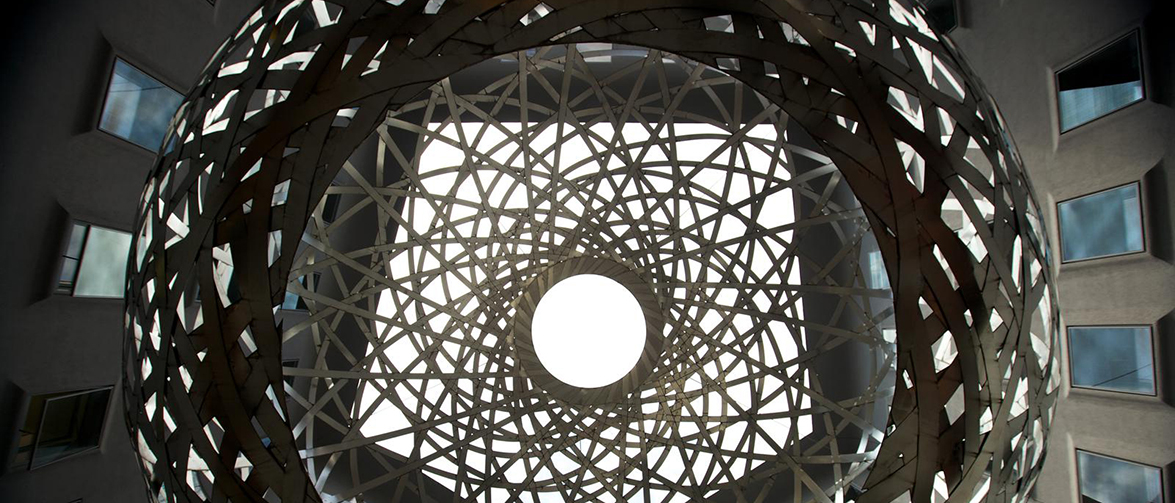
Golden ratio in Kosmorganica
The ancient Greeks and Egyptians depicted the divine through numbers and geometry. In Egypt temples were aligned precisely to the four cardinal points with light chambers that correspond with equinoxes. 18th-century architects such as Étienne-Louis Bouillée applied ratios of the Divine section, also known as the Golden mean to design his neo-classical ‘talking architecture.’ Architect Buckminster Fuller echoed the ancient Greeks when he said that analyzing the universe mathematically was one way of identifying God.[1] Artist James Turrell inspired by Egyptian temples and geomancy to celebrate light itself.
The Golden ratio is
It is the reciprocal relationship between two unequal parts of a whole, in which the small part stands in the same proportion to the large part as the large part stands to the whole. [2]
Many examples of the Golden section in nature occur as a pattern of spirals that move in opposite directions. We can observe it in sunflower petals, the horns of a ram, the flow of a river, or crystal growth. In the Power of Limits, Gyorgi Doczi points out that this mirrored spiral or dinergy pattern, not only applies to natural physical growth but all types of complementary relationships. Dinergy is a combination of dia (opposite) and energy that together produce a generative force. [ figure 1 ]Doczi explains that this spiral pattern that moves in opposite directions is the union of complementary opposites, such as sun and moon, positive and negative, yin and yang, major and minor.[3] In Kosmorganica, duality existence concerns the rational with the intuitive or science and art. The Hindus called this bridging of left and right hemispheres of the brain, ‘heart-mind’ and the ancient Egyptians called it, ‘Intelligence of the heart.’[4]
[1] Buckminster Fuller, Critical path (New York: St. Martin’s Press, 1981),159.
[2] Nigel Pennick, The Ancient Science of Geomancy (London: Thames and Hudson, 1979), 8-10.
[3] György Doczi, The power of limits: proportional harmonies in nature, art, and architecture (Boston: Shambhala, 2005), 1-3.
[4] Donald Kuspit, In The Spiritual in art: Abstract painting : 1890-1985. (Los Angeles: Los Angeles County Museum of Art, 1986), 313-325.
